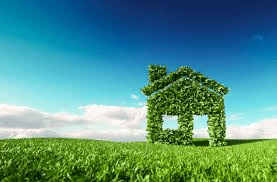Do you like grand designs? Would you love to build your own environmentally-friendly home? Self-build is becoming more popular as people look to build the home they want, which offers low energy bills and a comfortable lifestyle that doesn’t cost the earth. As new regulations are on the horizon regarding goals towards becoming net zero, it’s time to learn more about how to design environmentally friendly properties. These are the six top green building trends that you should know about to achieve your dream.
1. Zero Carbon
To be carbon neutral, your home must balance the energy consumption with the energy generated from renewable sources such as wind and solar. This is the ultimate goal of any home builder. After all, who wouldn’t like to have zero energy bills at their disposal? For advice from Cheltenham Builders, visit baytreehomes.co.uk/
2. Home batteries
You’ll also need batteries for your home if you want to achieve zero carbon emissions. They are designed to store renewable energy, allowing you to sell the electricity you don’t need back to the grid at a low price. This ensures that you have enough energy, even when it’s not sunny.
3. Oak frame construction
Bespoke oak frames are a great way to go green. You can build garages, carports or porches. These types of constructions produce structures that are durable and last for a long period.
- SIPs
These structural insulated panels are the next step after timber frame construction. They arrive on site pre-finished with interior finishing and insulation. They are airtight, and they prevent cold bridges exceptionally well. You’ll find them in kit homes of high quality.
5. Passive homes
The term is used in Europe and describes houses with minimal waste, and premium construction quality. The homes must also meet six standards, including mechanical heat recovery, solar heating and insulation. It’s a standard that was voluntary in Germany and is now becoming more common throughout Europe, Ireland, and Britain. The passive aspect comes from the home’s ability to make the most of natural passively occurring energy sources, such as solar, ventilation, shading and even geothermal aspects, for example.
- Mechanical ventilation with heat recuperation
Modern homes are becoming more energy-efficient and airtight. Additional mechanical ventilation is needed to prevent mould growth and remove the stale air. A MVHR system solves this problem by introducing new air to your home without reducing the heat.


